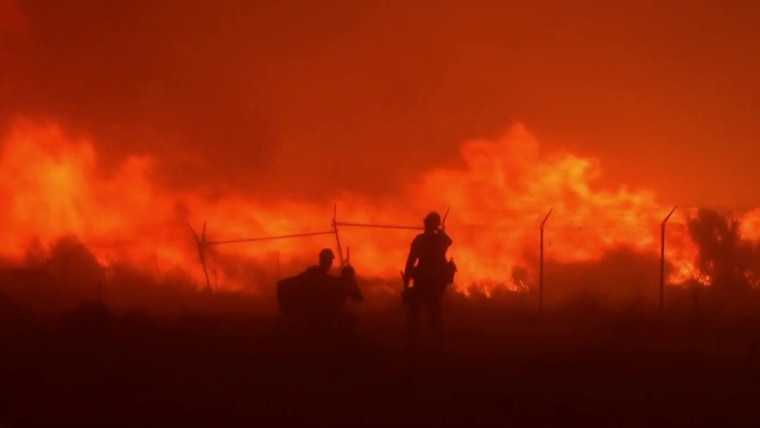Water levels in the southern part of Utah's Great Salt Lake have dropped to the their lowest levels ever recorded, and experts say conditions at the largest saltwater lake in the Western Hemisphere will decline further as extreme drought chokes nearly the entire state.
The U.S. Geological Survey announced Saturday that average daily water levels dropped by about an inch below the previous record of 4,191.4 feet above sea level, which was recorded in 1963. The agency's records of Great Salt Lake's elevations date to 1847.
Great Salt Lake's water levels have gradually been receding, but the recent declines have been aggravated by the megadrought gripping the Western U.S.
According to the latest report from the U.S. Drought Monitor, released Thursday, more than 99 percent of Utah is under "extreme" drought conditions. Almost 70 percent of the state is experiencing "exceptional" drought, the highest category.
"It's already concerning that Great Salt Lake has been on a slow decline, but the drought has accelerated that decline," said Candice Hasenyager, deputy director of the Utah Division of Water Resources. "It's really alarming."
There are still months to go in the lake's typical dry season, which generally stretches from June through the fall. It's likely that water levels will continue to drop, said Ryan Rowland, data chief at the U.S. Geological Survey's Utah Water Science Center.
"We think we could drop another foot to a foot and a half," Rowland said.
Human activity has been one of the biggest contributors to the lake's receding water levels, with increased water consumption for farming, mineral extraction and support for the municipal and industrial sectors all playing roles, Hasenyager said.
Great Salt Lake's water levels have varied throughout history, but climate change is changing how much overall water flows into it. Higher temperatures as a result of global warming are reducing the volume of snowpack and altering precipitation patterns.
"This is what climate scientists have projected, that we would see more extremes and higher temperatures," Hasenyager said. "And that's what we’re seeing."
Last month, water levels at Lake Mead in Arizona and Nevada, the country's largest reservoir, hit their lowest levels in history, another event that was worsened by the drought.
Although Great Salt Lake doesn't provide critical water supplies or electricity to the region, its declining water levels could have worrisome domino effects, she said.
"As the lake continues to dry, it could result in habitat loss, reduced snow, reduced lake access, increased dust, which could worsen our air quality, increased salinity — there are a lot of far-reaching consequences," Hasenyager said.
And because Great Salt Lake is relatively shallow, its water levels can mean considerable changes to the lake's shorelines and overall footprint.
"A drop in lake level exposes a lot of the lake bed to the atmosphere, and the circumference of the lake shrinks significantly," Rowland said. "So even small changes in the water levels can equate to fairly large changes to the lake's surface area."
"low" - Google News
July 27, 2021 at 05:18AM
https://ift.tt/3iT7kvF
Drought pushes Great Salt Lake to historic low - NBC News
"low" - Google News
https://ift.tt/2z1WHDx
Bagikan Berita Ini















0 Response to "Drought pushes Great Salt Lake to historic low - NBC News"
Post a Comment